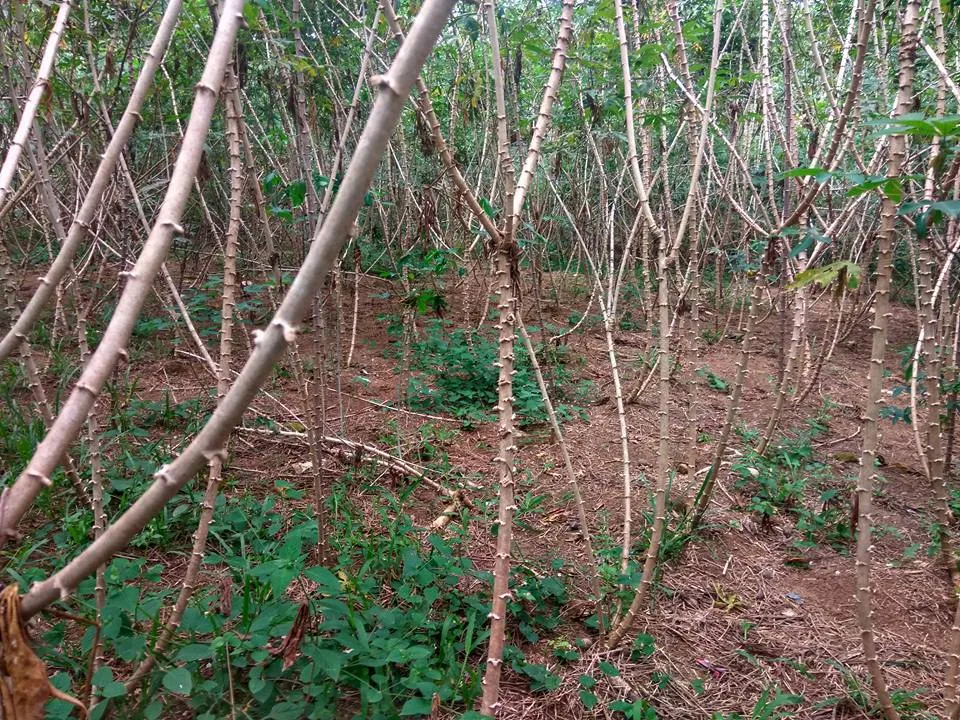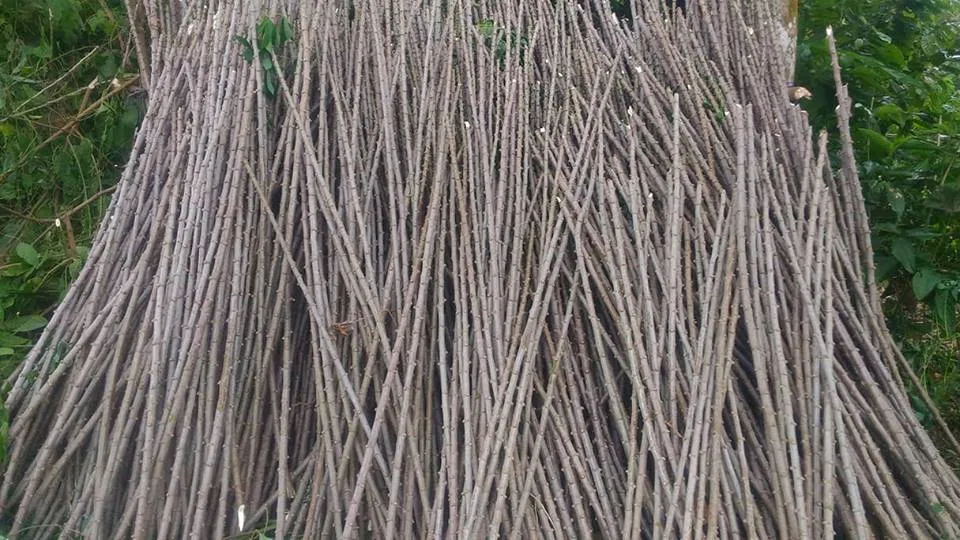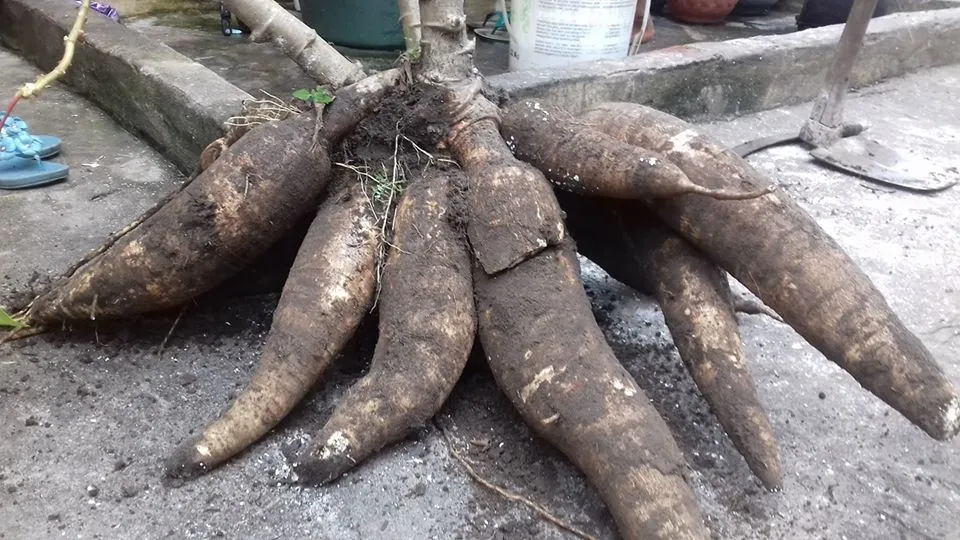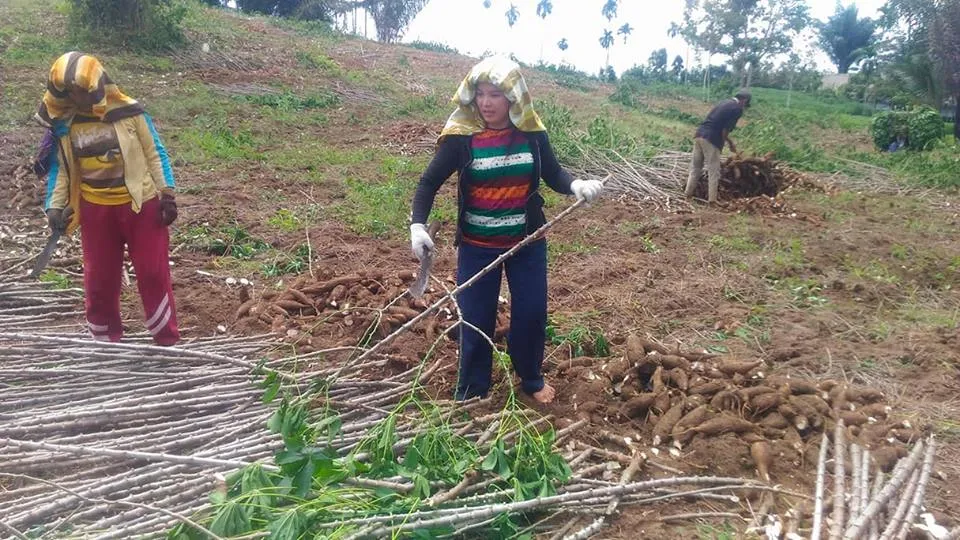Hy dear friend, have you ever planted cassava or ate it? Cassava is one of the many plants grown by our farmers, because the cassava fruit can be processed into food and vegetables. Immediately to discuss how to grow cassava to grow and bear much fruit.
Prepare the Land
To produce large and large berries, cassava plants must have room for growing roots. Therefore, in the preparation of planting land should be melting. Cassava cultivators can use hoes (small planting capacity) or use plows / tractors (for agricultural / industrial capacity).

Land that has been digemburi can be sprinkled with manure to add soil nutrients and become nutrients for plants to grow fertile. Add lime if acidic soil, because cassava will grow well on the degree of neutral soil acidity (pH: 5-8)
Prepare Seeds
In preparing the seeds of cassava, can be done by cutting the cassava stems into several pieces with a length of about 20cm. Cassava stems can be cut straight can also be cut incline.

Planting Seedlings
Seedlings that have been cut can be planted directly into agricultural land, planting cassava seeds with a distance of 60 cm x 80cm (60cm seedlings with other seedlings: 80cm distance between lanes / columns). in planting cassava seeds that must be considered is the direction of buds, do not upside down.

We can see the direction of the shoots near the books or protrusions of cassava leaves that are loose. In the position can be seen child buds (often called the eye). Make sure the child shoots face up, so as not to grow upside down.
Treatment of Cassava Plant
Cassava plants should be treated to obtain a lot of yams and weight, how to do cassava plant maintenance can be done by fertilizing on 3minggu-4minggu first or after cassava has issued a bud with leaves about 5-7 strands. Perform fertilization by using chemical fertilizers (Urue, TSP, KCl) with a dose adjusted to the instructions listed in the sack of fertilizer.
In addition to fertilizing, also do weeding or cleaning weeds and weeds that interfere. Perform embroidery on seeds that do not grow and collapse. Fertilization can also be done in the 5th month of planting to make the tubers larger when harvested. But usually only use urea only.
Harvesting Cassava
Cassava plants can generally be harvested at about 7-8 months of planting. But along with the increasing technology that can produce new varieties, there is cassava that can be harvested in the 5th month of planting. The characteristics of cassava plants ready to be harvested are the leaves have begun slightly due to falling, cassava is large (can be seen by digging the soil on the sweet potato).

Do the harvesting by manually removing cassava, the loose soil would certainly help to reduce the cassava cassava left behind when revoked. Cassava can be harvested simultaneously. Separate the yam from the tree by cutting with a machete / machete at the base of the sweet potato (not to be exposed to the sweet potato).
After Harvest
Collect all remaining cassava stems to clear the land for replanting. these remaining cassava rods can be used as seeds for further planting or can be burned on the farm / garden to become fertilizer.

Those are some ways of doing the right cassava planting in order to produce a lot of crops, and doing maintenance on cassava. Selection of good seeds will greatly affect the harvest.